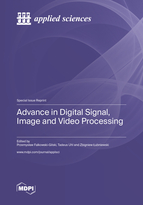Neural-Network-Assisted Polar Code Decoding Schemes
 Peter V. Trifonov
Peter V. Trifonov
Round 1
Reviewer 1 Report
The authors present an improved decoding method for polar codes. They generalize the well-known FastSC decoder by introducing "neural network nodes". The proposed approach seems to be reasonable.
Detailed comments:
1. NNN acronym is not defined in the abstract.
2. The claim in the abstract "but the sub-code decoding adopts a sub-optimal algorithm" is highly questionable. Classical FastSC employs optimal decoding algorithms for subcodes. However, their combination at different steps may indeed become suboptimal.
3. The quality of figures is very poor. Please use vector graphics. Please provide also a meaningful legend for the plots.
4. BER cannot be 0 even at very high SNR. However, it may be sufficiently low so that you do not observe a single error in your simulations. Please introduce some threshold for BER
5. The main problem is that the authors do not discuss the complexity of the proposed approach. Please report the exact number and type of arithmetic operations performed by your decoder, and provide performance comparison with other decoding algorithms having the same complexity. In particular, please consider the following algorithms:
I. Tal and A. Vardy, “List decoding of polar codes,” IEEE Transactions On Information Theory, vol. 61, no. 5, pp. 2213–2226, May 2015
M. H. Ardakani, M. Hanif, M. Ardakani, and C. Tellambura, “Fast successive-cancellation-based decoders of polar codes,” IEEE Transactions On Communications, vol. 67, no. 7, July 2019
P. Trifonov. Recursive Trellis Decoding Techniques of Polar Codes. In Proc. of IEEE International Symposium on Information Theory, 2020
Author Response
- NNN acronym is not defined in the abstract.
R: We have modified it.
- The claim in the abstract "but the sub-code decoding adopts a sub-optimal algorithm" is highly questionable. Classical FastSC employs optimal decoding algorithms for subcodes. However, their combination at different steps may indeed become suboptimal.
R: We have modified it.
- The quality of figures is very poor. Please use vector graphics. Please provide also a meaningful legend for the plots.
R: We have modified them.
- BER cannot be 0 even at very high SNR. However, it may be sufficiently low so that you do not observe a single error in your simulations. Please introduce some threshold for BER
R: We have modified it.
- The main problemis that the authors do not discuss the complexity of the proposed approach. Please report the exact number and type of arithmetic operations performed by your decoder, and provide performance comparison with other decoding algorithms having the same complexity. In particular, please consider the following algorithms:
- Tal and A. Vardy, “List decoding of polar codes,” IEEE Transactions On Information Theory, vol. 61, no. 5, pp. 2213–2226, May 2015
- H. Ardakani, M. Hanif, M. Ardakani, and C. Tellambura, “Fast successive-cancellation-based decoders of polar codes,” IEEE Transactions On Communications, vol. 67, no. 7, July 2019
- Trifonov. Recursive Trellis Decoding Techniques of Polar Codes. In Proc. of IEEE International Symposium on Information Theory, 2020
R: We have modified them.
Reviewer 2 Report
1、 Please corrective the paper title more specifically;
2、 Please replace some pictures to make them clearer;
3、 Please adjust the size of the tables to make the article format uniform;
4、 Obviously, KSNNAD and LSNNAD have fewer decoding steps than FSC and NNAD, but their performance is better. So I think it will be more convincing to replace the comparison scheme in 4.1-4.3 with FSC;
5、 Please correct the errors, such as line 10, 278, 287, 308, 384 and etc.
Author Response
- Please corrective the paper title more specifically;
R: We have modified it.
- Please replace some pictures to make them clearer;
R: We have modified them.
- Please adjust the size of the tables to make the article format uniform;
R: We have modified them.
- Obviously, KSNNAD and LSNNAD have fewer decoding steps than FSC and NNAD, but their performance is better. So I think it will be more convincing to replace the comparison scheme in 4.1-4.3 with FSC;
R: We have modified them.
5、 Please correct the errors, such as line 10, 278, 287, 308, 384 and etc.
R: We have modified them.
Round 2
Reviewer 2 Report
If you update figures 1, 4, 5, 7, 8, 13-17, the paper will be more perfect.
Author Response
We have updated the figures.
Author Response File: ![]() Author Response.docx
Author Response.docx





